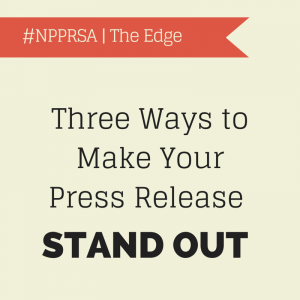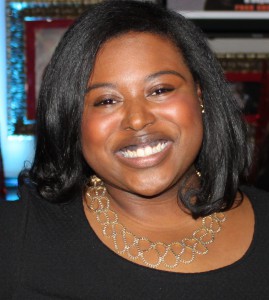When I started working in my current role at a strategic communications agency, the company encouraged me to find my passion and become an expert in it. My love of writing and a good challenge drew me to media relations.
 I attended webinars, met with specialists at the company and networked with local public relations professionals to learn more about the art of media relations.
I attended webinars, met with specialists at the company and networked with local public relations professionals to learn more about the art of media relations.
The most important strategy I found in my research is that media relations should be a two-way relationship with the press (Click to Tweet!).
As public relations professionals, we have a responsibility to provide a service to the media, acting as a resource by providing relevant story ideas and assets.
Sure, this is great in theory, but as a new professional—how do I start building these relationships?
1. Only send relevant pitches.
Be respectful of your media contacts by researching what they cover before sending your pitch. Establishing this trust early on will help build strong relationships with your contacts.
2. Network whenever possible.
Look for opportunities to reach out to media contacts in your community and build those relationships. Get to know them and find out how you can work best together. I met a local news producer at a PRSA luncheon, and set up a coffee meeting with her the following week. She shared her perspective on working with public relations professionals, and we discussed the types of stories she’d like me to send her. (Check out your local PRSA chapter for similar media networking events in your area!)
3. Connect on social media.
Much like the other relationships in your life, social media can be used to communicate with the media contacts you work with. You can use LinkedIn, Facebook, Twitter and other social channels to build relationships with the media.
4. Be patient.
It takes time to master the art of media relations and build your network.
Media relations is not an exact science. It’s all about finding out what works for you, and for your contacts.
What steps did you take to kick-start your career in media relations and build your network?
About Callie Turgeon
 Callie Turgeon graduated from Gonzaga University in 2014 with a Bachelor of Arts in Public Relations, with a concentration in promotions and entrepreneurial leadership. She is currently an account associate at MSLGROUP, where she works mostly with commodity food accounts. Connect with her on LinkedIn.
Callie Turgeon graduated from Gonzaga University in 2014 with a Bachelor of Arts in Public Relations, with a concentration in promotions and entrepreneurial leadership. She is currently an account associate at MSLGROUP, where she works mostly with commodity food accounts. Connect with her on LinkedIn.


